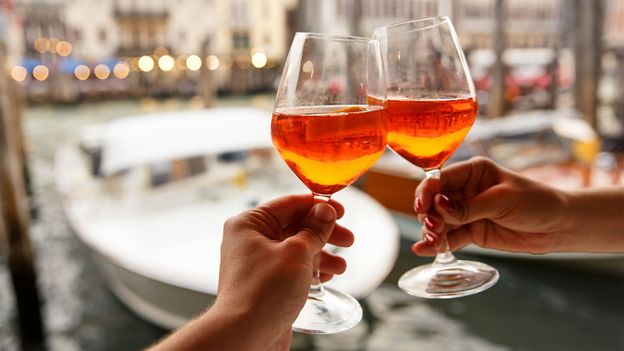A universal crowd-pleaser, and much less alcoholic than Campari, Aperol introduced a taste for bitterness to people who didn’t know they liked it yet, Villa explained. In the US, Aperol played a key role in the evangelisation of bitterness. Until about 40 years ago, Americans weren’t open to bitter flavours, just as they weren’t to dark chocolate, strong coffee or kale. Now, people are Googling questions like, “What the heck is Vermouth?” (a bitter, fortified wine) or “What is red bitter liquor?”, and more existential dilemmas like “Can you drink Aperol by yourself?”
Such global success seems to always come at a price, however. In this case, the casualty was the olive. To appeal to an international audience who preferred the zesty taste of the orange – and, according to Pasini, its cheaper price – there is no mention of the olive in the recipe on the label of the Aperol bottle (just the orange slice garnish). Most non-Italians I asked didn’t even know an olive was ever an option.
“It’s a big loss for humanity,” said Pasini. The olive garnish adds a touch of salt that tempers the sweetness, especially if you don’t rinse the brine. And any serious bartender in Venice would add a full olive with the pit, which is part of the culture of the drink in the city. “There is always that awkward moment when you don’t know where to put the pit,” conceded Cozzella. “On the napkin? Next to the chips?”
Pasini prefers the orange and olive together like they used to do in his native Treviso, another town of the “spritz archipelago”. His list of grievances goes on: the commercial recipe has too much Aperol – and too much ice (see his recipe below). He thinks that you only need two ice cubes, not a full glass because “a spritz isnot a mojito”. And because it’s a spritz and not a cocktail, he also argues there’s no need for a straw.

